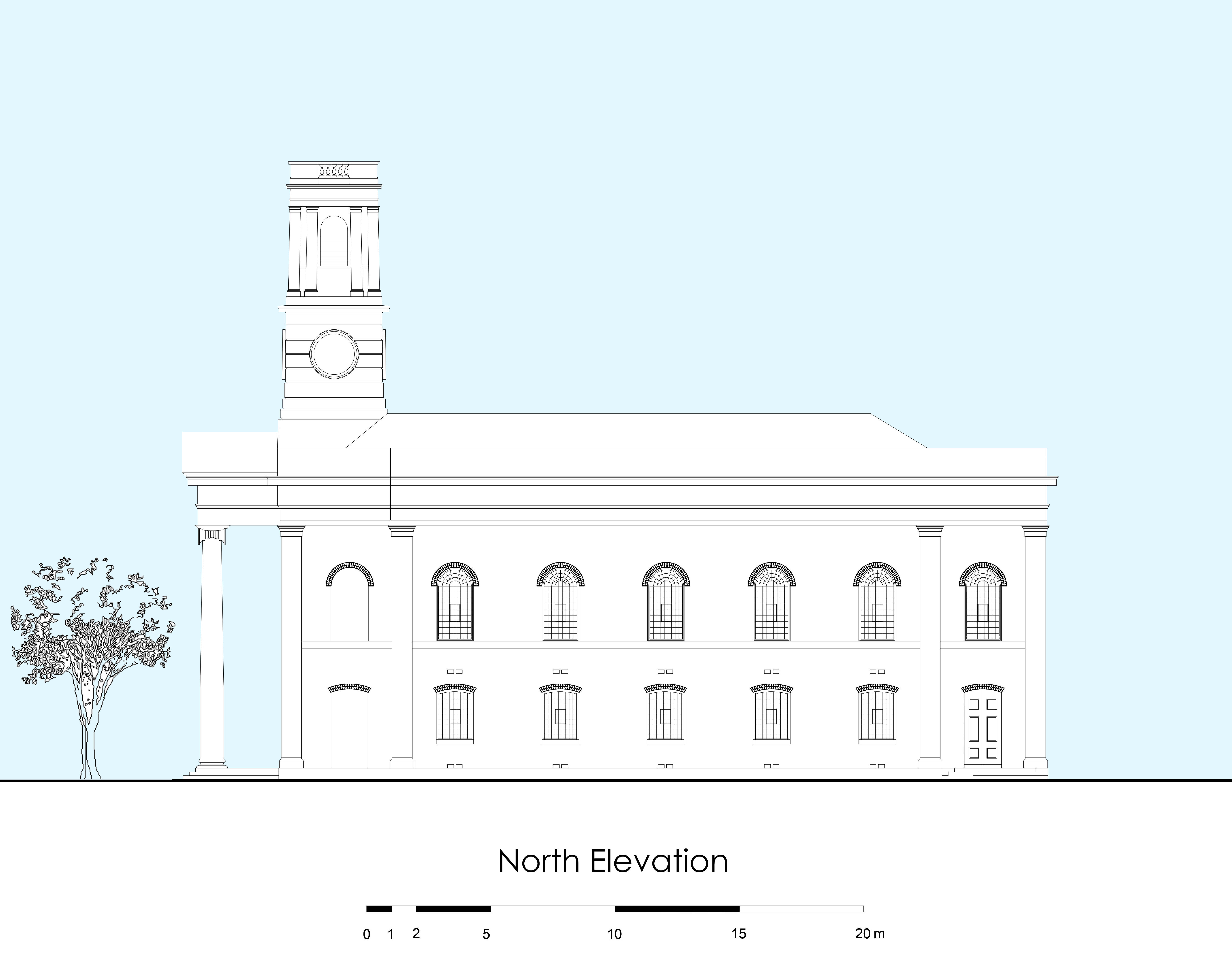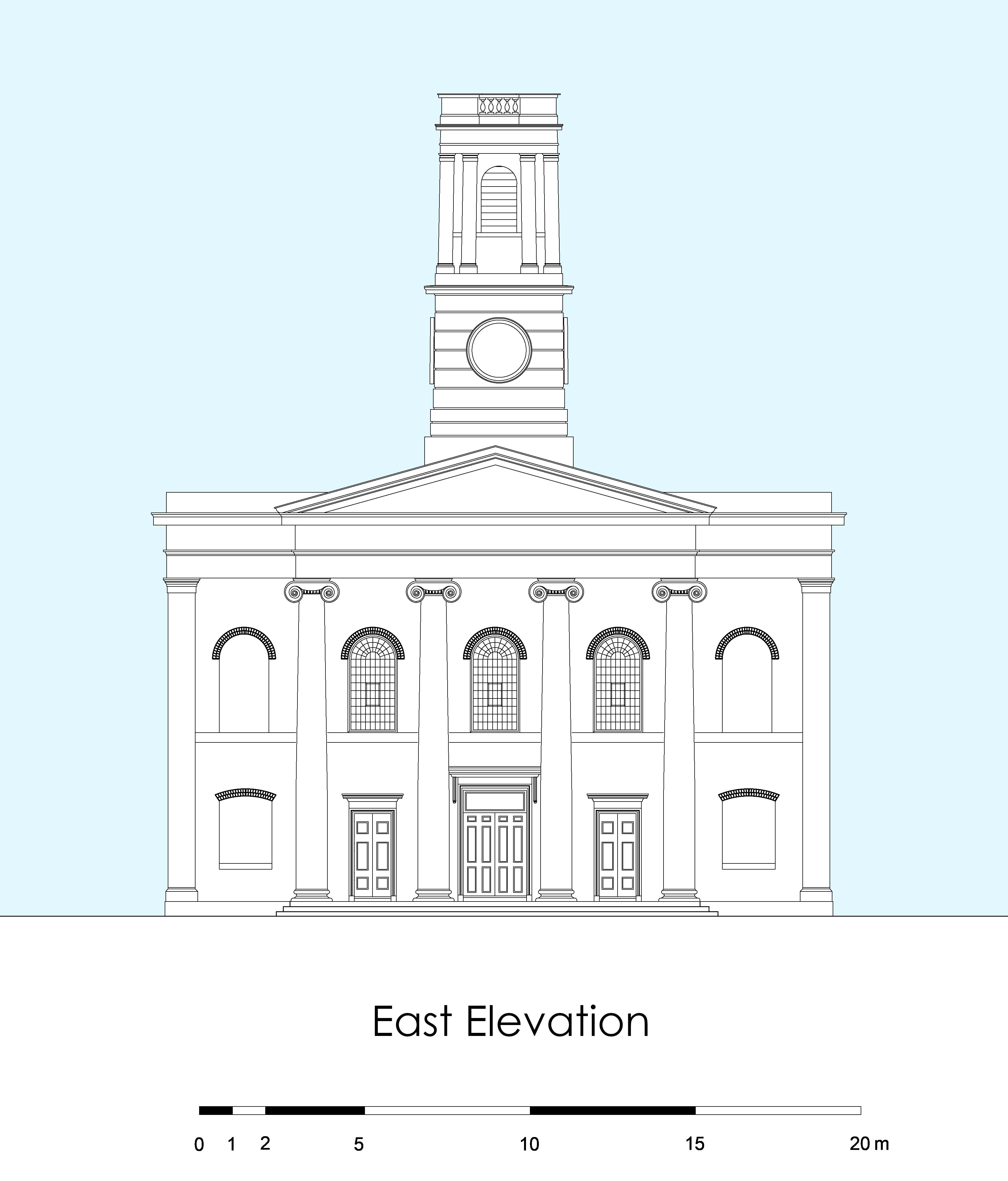The MSc in Architectural Conservation of the University of Kent provides students with a unique opportunity to work on real conservation projects, preparing conservation plans, structural reports and design proposals. During the last academic year, the students worked on the restoration of the Sheerness Dockyard Church. Designed by George Ledwell Taylor, and currently one of the few remaining Regency dockyard churches, this monument was tragically destroyed by fire in 2001. The students’ archival research into the history of the monument revealed an unknown building phase and provided the basis for an outstanding reconstruction proposal. This work was carried out by multidisciplinary teams which brought together students of different backgrounds, including architects, art historians and civil engineers. Combining these skills, our students produced documents of outstanding quality, which have the potential to inform the future development of the church.
The drawings shown below form part of the project submitted in April 2016 by Bradley Lowe, Dogancan Erol, Xi Dai, and Haobo Wang,






